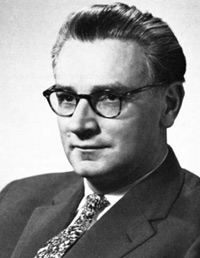 The first program-controlled computer machine was built in the inventor’s parent’s living room. The Z1 was assembled between 1936 and 1938 by a German man with no background in electronics. Konrad Zuse, a civil engineer, quit his job at an aviation company to build his device.
The first program-controlled computer machine was built in the inventor’s parent’s living room. The Z1 was assembled between 1936 and 1938 by a German man with no background in electronics. Konrad Zuse, a civil engineer, quit his job at an aviation company to build his device.
His job at the aviation company required extensive mathematical calculations that were done by hand with paper and pencil. Mechanical calculators at the time were very expensive and were mainly designed for statistics, accounting and other business applications. A quote from Zuse explains his motivation for building the machine:”You could say that I was too lazy to calculate and so I invented the computer. “
Zuse knew that a better and more flexible calculating machine could be built. He believed such a machine would be able to perform almost any calculation if everything was expressed in a series of yes or no data bits. This was the beginning of binary manipulation.
 The German man did not have the funding from universities and companies that many others working in research at the time had. The logic and mechanics of the machine were complete his own ideas. His parents and friends assisted him by giving him small amounts of money and cutting the hundreds of metallic plates needed for the device. Still, no one other than Zuse understood how the machine actually worked.
The German man did not have the funding from universities and companies that many others working in research at the time had. The logic and mechanics of the machine were complete his own ideas. His parents and friends assisted him by giving him small amounts of money and cutting the hundreds of metallic plates needed for the device. Still, no one other than Zuse understood how the machine actually worked.
The Z1 contained most of the parts of a modern computer. It had a control unit, memory, micro sequences, floating point logic and input-output devices. The Z1 could be programmed with punched 35mm film and a punched tape reader. Old 35mm movie film was used to store the programs and data for the computer. The device had a 64-word floating-point memory. Each word could be read by and written to the control unit.
Specification of the Z1:
- Memory: 64 words of 22 bits
- Clock speed: 1 Hz
- Registers: Two floating-point registers of 22 bit each
- Arithmetic Unit: Four basic operations (add, subtract, multiply, divide) for binary floating point numbers
- Weight: 1,000 kg (2,200 lb)
- Average calculation speed: addition 5 seconds, multiplication 10 seconds
The Z1 was destroyed in 1942 by Allied bombings of German. This though was not the only computer designed by Konrad Zuse. Throughout the course of his career, Zuse would build many more computers, design the first high-level programming language and found one of the first computer companies, Zuse-Ingenieurbüro Hopferau.
Despite having continuous problems receiving patents, Zuse considered himself the first inventor of the computer. Many other experts in the field believe the same. The binary system implemented in Zuse’s Z1 is what is used in computers to this day.
Between 1987 and 1989, Konrad Zuse decided to recreate the Z1. The recreation had 30,00 pieces, cost over 800,000 Deutsche Marks and required the help of 3 other people to assemble.

One thought on “The Invention of the First Computer…Sort of”